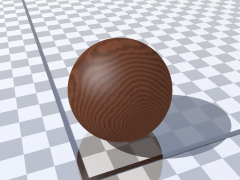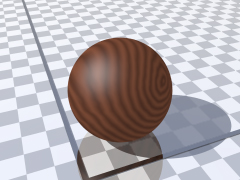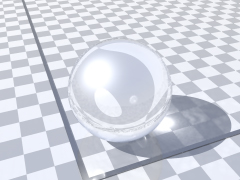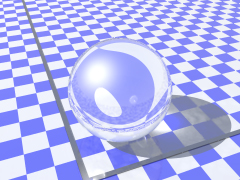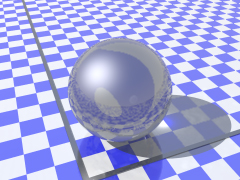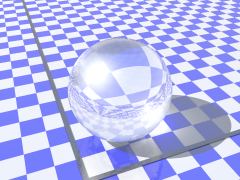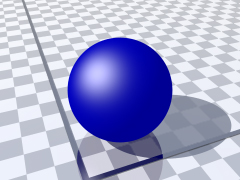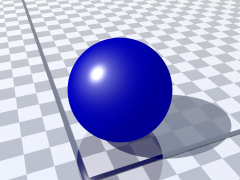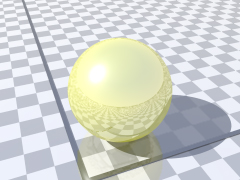the left image is a scene of a wooden sphere. its texture is determined using predefined textures. the code used
is as follows:
the right image is a scene of the same wooden sphere, but with transformations to the texture. the code used is as follows:
line07: #include "textures.inc"line07 is required to use predefined textures as these textures are set in the include file, in this case, textures.inc. it is possible that users create their own include file for custom predefined textures. line90 is used in the texture parameter of the sphere object. the texture name is case sensitive according to how it is named in the include file.
line90: DMFWood3
the right image is a scene of the same wooden sphere, but with transformations to the texture. the code used is as follows:
line96: scale 3.0line96 indicates the texture has been enlarged 3.0 times the original size. line97 indicates the texture has then been translated 0.5 vectors along the x, y, and z axes, which may also be written as "<0.5, 0.5, 0.5>". this technique has created a completely different looking wooden sphere with the same predefined texture.
line97: translate 0.5
